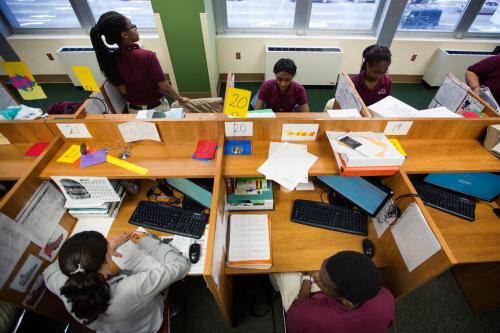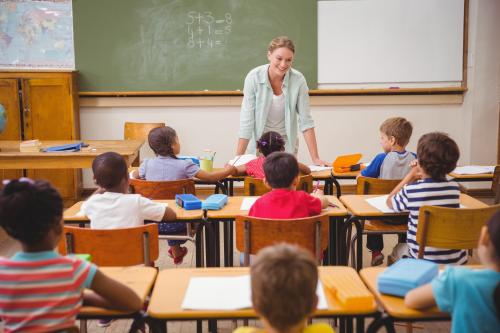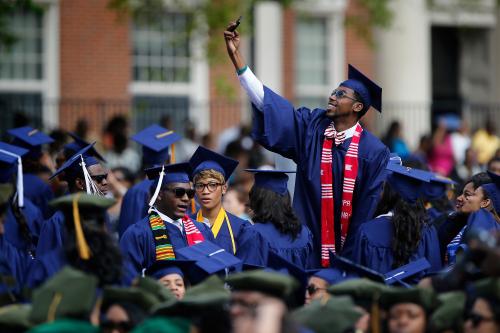This story was produced by The Hechinger Report, a nonprofit, independent news organization focused on inequality and innovation in education. Sign up for our newsletter.
Broken boiler systems in Baltimore’s public schools is symptomatic of a lack of infrastructure.
Broken boiler heaters forced numerous students in Baltimore to learn in freezing conditions last week and once again put Baltimore under scrutiny for its treatment of black residents. Students shivering in winter coats while trying to learn is horrific in itself, but the malfunctioning boilers is a metaphor for the wider problems with the criminal justice systems, schools, housing and economic development plans in the “Charm City.”
School officials closed three schools earlier in the week because of heat and water problems. “We won’t rule out (shutting down schools districtwide),” said Baltimore City Schools CEO Sonja Santelises. She was also quoted as saying, “Nobody in this city, including me, wants folks sitting around in coats and mittens all day.”
But though 60 schools in total had problems, the vast majority stayed open, some of them relying on space heaters. Baltimore needs more than space heaters, planning meetings and patchwork fixes.
Fix the heating systems. Baltimore should be beyond meetings and debate. If the neighborhood conditions that were exposed by the death of Freddie Gray and riots didn’t move us to improve basic infrastructure, maybe students in frigid schools will. If the governor and mayor conducted their school spending meetings in the same cold facilities they would have students learn and teachers instruct, the heat would be fixed by now.
Baltimore needs more than space heaters, planning meetings and patchwork fixes.
If President Trump was serious about moving an infrastructure bill, Congress should draft a school rebuilding plan that starts with Baltimore.
“What do y’all think about school being this cold?” author and former NFL linebacker Aaron Maybin asked a group of Baltimore elementary school kids wearing winter coats and hoodies, though they sat in their classroom. Maybin captured the discussion on video and posted it to his Twitter account. When asked how school has been, a voice rose from the bundled up throng of children saying, “Cold — very, very, very, very, very, very cold.”
A boiler system, maybe two, breaking down at one school in the first winter storm should be expected. However, keeping schools open in less than ideal circumstances after district leaders closed three schools earlier in the week shows that there is a systemic issue.
These are the times when infrastructure spending should come into clear focus. If students are expected to learn in the cold, maybe the chilly air can excite action among stakeholders who seem stymied by inertia.
Marietta English, president of the Baltimore Teachers Union, wants schools closed. “Your expectation that our members and the children that they teach endure bursting boilers, drafty windows, frigid temperatures in classrooms, and risk getting sick in these ‘less than ideal’ conditions, is utterly ridiculous,” wrote English in a letter to addressed to Santelises.
And yet, shutting down schools district-wide could result in a case of taking kids out of the cold and making them hungry. More than 80 percent of the students from Baltimore City Schools are from low-income families and qualify for free and reduced lunch. Keeping them from school would make students miss needed meals. In addition, kids who are not in school need looking after, and parents who can’t afford a daycare provider may stay home from work, resulting in a loss of income.
Officials have to consider deep pockets of poverty in black neighborhoods put on full display during the Freddie Gray uprising in 2015. That spring, Gray died while in police custody under suspicious circumstances. The officers involved were acquitted, but the incident spotlighted the depth of public divestment and neglect as well as the institutional barriers in Baltimore that burden many black families.
Closing all the schools would be “overly simplistic,” said Santelises in a Facebook Live interview. She’s right.
The state determines city funding for schools in Maryland. The 2017-18 fiscal budget is $1.31 billion. Baltimore City schools spent the fourth most per student among the top 100 school districts during the 2014 fiscal year, which includes building maintenance, according to analysis of census data by Baltimore Business Journal. In a city with needs this deep, however, that’s still not enough. Outbreaks of violence, broken infrastructure, and harsh policing reflect a need for resources that outpaces the spending.
At an event at the Brookings Institution after the riots in Baltimore in 2015, Derek Douglas, vice president for civic engagement at the University of Chicago and former member of the White House Domestic Policy Council, discussed how planning can go awry. “If you go into these communities they’ll have 50 plans, and every year some new group is coming to do a plan. And they feel that they’re essentially planned all the time, with nothing ever actually happening.” (This blog’s author is a Rubenstein Fellow at Brookings.) The broken heating systems confirm Douglas’ views. Everyone agrees on what needs to be done but no one does it.
The harsh economic realities motivated Maybin to crowdsource money for space heaters and winter coats. His efforts, though noble, are a sorely inadequate Band-Aid on a deep wound. The sad reality is that moving children temporarily to schools with functioning heat that have room or providing overly cold schools with space heaters, which are never entirely safe, are seemingly the best short-term responses the district can make.
Maybin’s tweets and pleas for space heaters won’t be enough to force change in schools, the criminal justice system, housing, as well as economic development. Collective action will do that. It may be cold now, but the fire next time.






Commentary
Baltimore students need more than space heaters; They need justice
January 10, 2018